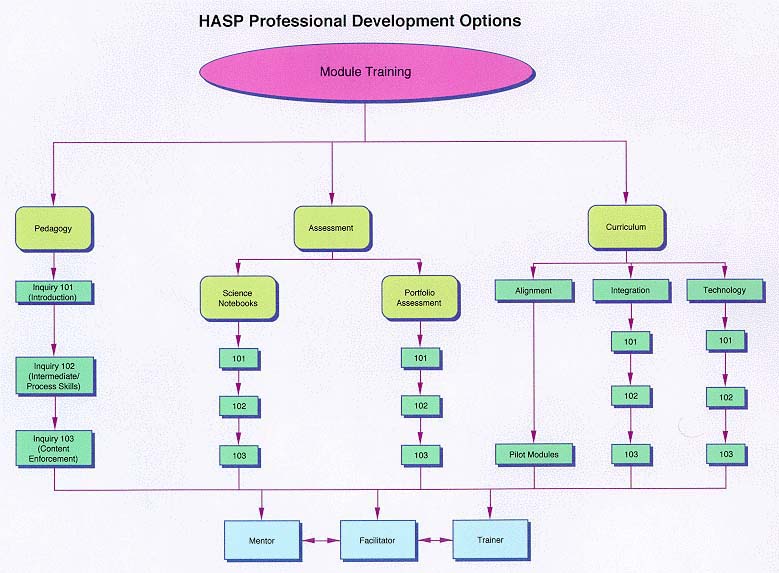 |
|
|
Poster Presentation Full Text: Is there life after LSC funding ends?? Poster presentations are composed in four parts:
|
|
In the best of all possible worlds, in the sustaining phase the project would continue much as it was under the LSC, with the same level of financial support for professional development (PD) and the same level of PD per teacher. Materials would continue to be used and supported and teachers would progress in their abilities to use them effectively. Test scores would increase beyond our wildest dreams; and it would all be credited to inquiry-based instruction, which began in science and spread to all other subjects.

( BACK TO POSTER | BACK TO TOP )
We are now at the end of our funding and must face realistic limitations of two basic resources: funding and time.
Funding. Funding limits the number personnel whose time can be devoted to the planning, development, and delivery of PD. It also limits the ability to get teachers to the PD, either through the payment for substitutes for release of the teachers from class during the school year or for the payment of stipends as an incentive to attend summer PD activities. This may also translate into a limitation on when PD can be done (days set aside for PD).
Time. Teachers time is also a precious commodity. For the districts it translates to funding, as noted above. But it also relates to other demands on teachers' time for professional development. In Alabama we have had a Reading Initiative for several years which is considered a priority in many schools, and with the end of the project, districts have been breathing a sigh of relief to be released from the significant commitment of teacher's PD time to science alone. [-We've done science, now we can turn to other important subjects']
Reality. What has actually happened in our case has been a limited, but significant commitment by the districts to continue providing materials support for their teachers and to support the costs of a professional development coordinator and a Teacher-in-Residence who provide 6-10 hours of science PD per teacher per year to all elementary teachers in the districts. This commitment is shared by the LSC districts, as well as three other districts who had previously implemented HASP. In order to provide for the PD needs for all teachers, from newly hired teachers to teacher leaders, we developed a menu of options which address different topics at typically three levels (see the PD options chart). This is a work in progress, but this framework provides a means for a teacher to develop a personal development plan and for district co-directors to plan for the broad areas of their district's PD needs in science.
( BACK TO POSTER | BACK TO TOP )
( BACK TO POSTER | BACK TO TOP )
THIS POSTER WAS PREPARED BY:
R. Hugh Comfort of the Hands-on Activity Science Program project (HASP).
( BACK TO POSTER | BACK TO TOP )
|